June 18, 2025 | 03:26 GMT +7
June 18, 2025 | 03:26 GMT +7
Hotline: 0913.378.918
June 18, 2025 | 03:26 GMT +7
Hotline: 0913.378.918
In recent years, tourism in Mu Cang Chai has seen remarkable growth, unlocking potential and making it one of the most attractive destinations in the Northwest region. Known not only for its magnificent mountains, mysterious forests, and surreal terraced fields that captivate visitors, this land also boasts a rich cultural heritage and unique ethnic identities for travelers to experience and explore.

Yellow corn house is an appealing stop for many visitors. Photo: Thanh Tien.
The Mang Mu corn house in Mo De commune, Mu Cang Chai district (Yen Bai province), is a popular stop for many tourists due to its unique decor and cozy experiential space. Located in Mang Mu village, the house stands out with its decor of thousands of corn cobs adorning both the interior and the ceiling, earning it the name "Mang Mu corn house." Even from afar, the house stands out with its roof made from overlapping layers of po mu wood planks and bright yellow corn-cob walls.
Corn is a common agricultural product in Mu Cang Chai, with around 5,000 hectares grown annually on the region's hillsides. This staple crop plays a crucial role in the culture and farming life of the Hmong people, who have crafted unique corn-based dishes with unforgettable flavors, such as mèn mén (corn rice) and pá páo cừ corn cakes.
Every year during the harvest season, corn is stacked everywhere — outside, in courtyards, and inside houses. To preserve it, locals often peel the corn, bundle it, and hang it on the walls, ceiling, and other elevated spots to protect it from animals and moisture, ensuring food supply for winter. Hanging corn also holds spiritual significance, symbolizing hopes for a prosperous harvest and a warm, abundant life.
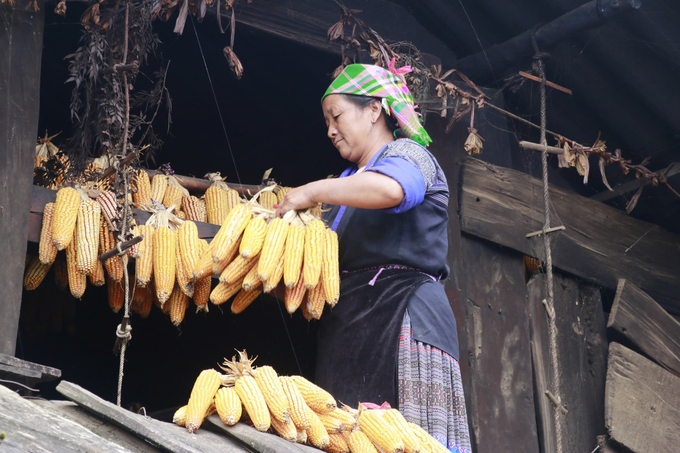
Mu Cang Chai people often hang corn on the elevated spots to protect it from animals and moisture. Photo: Thanh Tien.
Inspired by tourists' interest in homes adorned with corn near the terraced fields, Mr. Giang A Sua from Mang Mu village decided in 2017 to design a corn-themed house with an experiential space to attract tourists, generating extra income and promoting his ethnic culture.
According to Mr. Sua, the decor highlights the unique culture of the Mu Cang Chai people, with thousands of golden corn cobs carefully hung throughout the house, each chosen to be uniform in size to create a visually special effect for visitors. The glistening corn racks by the porch are also securely and carefully hung.
Admission to the corn house is only VND 10,000 per person, where visitors can explore, take photos, and check in. Here, tourists can also learn about Hmong weaving and even try their hand at drawing with beeswax on fabric. This wax-drawing art has become a Hmong women’s heritage, a skillful, handcrafted tradition involving natural dyes and materials. Among the most intricate steps, beeswax drawing demands meticulousness, creating a distinctive beauty in traditional Hmong women’s attire.
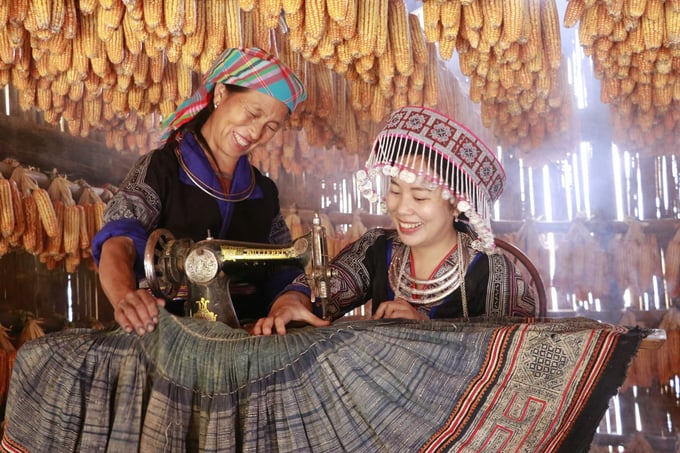
Within the corn house, there are numerous experiential spaces for tourists. Photo: Thanh Tien.
After guidance on drawing techniques, locals assist visitors in dyeing their designs, which they can take home as souvenirs. In this setting, tourists can also experience local weaving, using stone irons for pressing fabric, or trying out daily tools like rice mills and grain pounders.
Philip, a German visitor, shared that this was his first time in Mu Cang Chai, and the corn house activities were fascinating, offering a simple yet richly cultural experience of the highlands. He and his friends tried various activities, from wax drawing to using daily Hmong tools like the grinding mill.
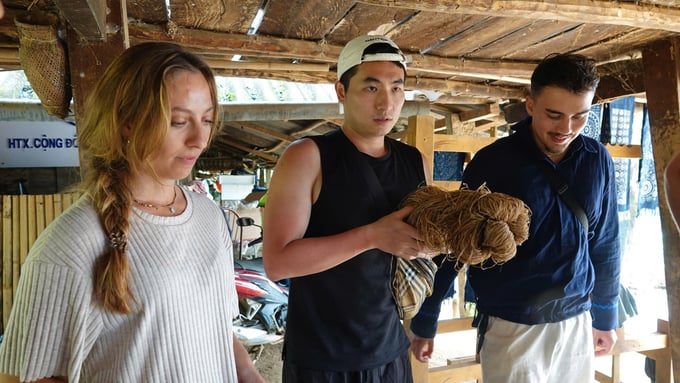
Foreign visitors are shown how to grow flax and weave fabric. Photo: Thanh Tien.
“I think it’s very labor-intensive,” said Philip. “We had to push, pull, and the process is complex and meticulous, making it very challenging for us. The experience helped us understand local life and how they create items like clothes and food. Their lives are simple but full of happiness, very grounded in nature. I hope they’ll maintain this lifestyle for a long time.”
Sophia, another tourist, noted that drawing with beeswax on fabric was difficult but enjoyable, and she had never seen anything like it before. She was guided by Hmong women, who taught her each drawing stroke and explained how long it takes to make a piece of fabric, sometimes up to a year to complete a full outfit. This experience deepened her appreciation of Hmong traditional clothing and daily life.
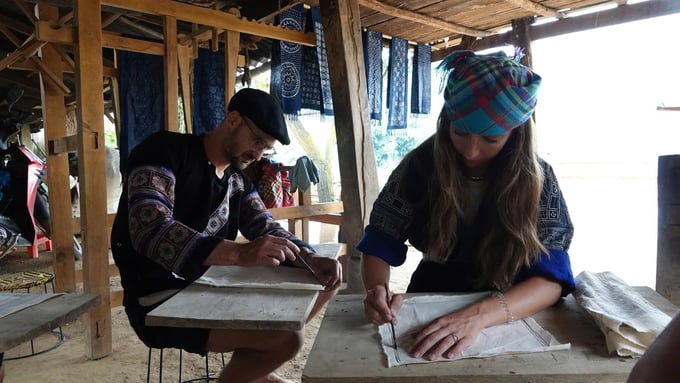
Western visitors are drawing with beewax on fabric. Photo: Thanh Tien.
Many domestic tourists have also visited this unique corn house, where women enjoy drawing with beeswax, donning traditional attire, and taking photos with the corn-decorated walls and other cultural items. Men find interest in traditional musical instruments, especially the khen (bamboo pipe flute), and receive guidance on playing it and other wind instruments.
Mrs. Mua Thi My from Mang Mu village shared that organizing these experiential activities and guiding tourists in daily chores helps provide stable income for local people, earning between 300,000 – 500,000 VND daily during the tourist season, while also promoting the rich cultural identity of the Hmong to both domestic and international visitors.
Translated by Kieu Chi
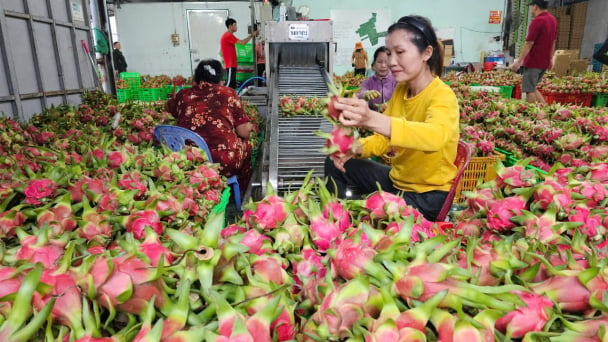
(VAN) According to the Binh Thuan Department of Industry and Trade, in the first five months of 2025, Binh Thuan's dragon fruit export turnover increased by 20.65% compared to the same period last year.
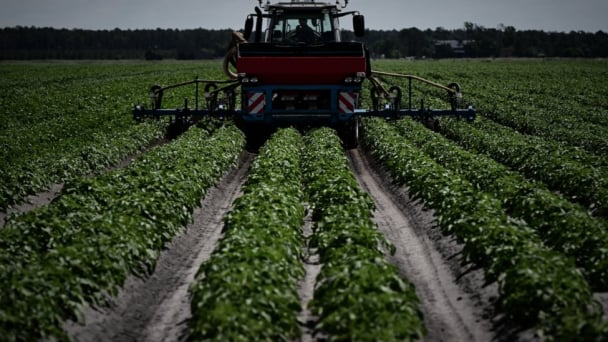
(VAN) EU countries on Thursday gave final approval to new tariffs on fertilizer imports from Russia, a move aimed at cutting off revenue that could support Moscow’s war in Ukraine, despite concerns from European farmers.
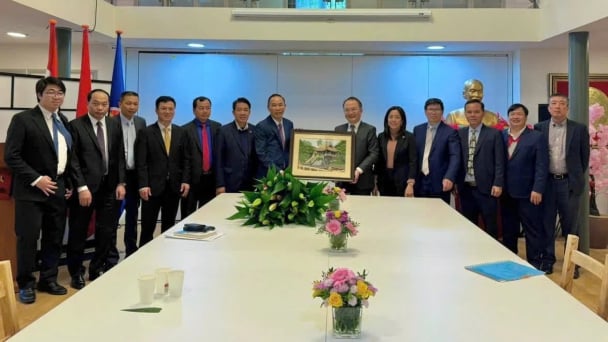
(VAN) The working delegation from the Ministry of Agriculture and Environment conducted an important trip to the Netherlands to strengthen strategic partnerships and sustainable development in the agricultural sector.

(VAN) The letter ‘A Plea from the Ocean’ not only evokes emotion but also awakens the human conscience to the responsibility of protecting life on Earth.

(VAN) The Department of Agriculture in South Africa has announced the country’s first mass vaccination of poultry to prevent local birds from contracting avian influenza.

(VAN) Establishment of the Mekong Delta Regional Agricultural Linkage Center, aiming for a closed value chain, deep processing, trading platforms, and international market connectivity.

(VAN) Gia Lai province has recently recorded 460 rare species of animals and plants, contributing to forest conservation and biodiversity planning in the region.